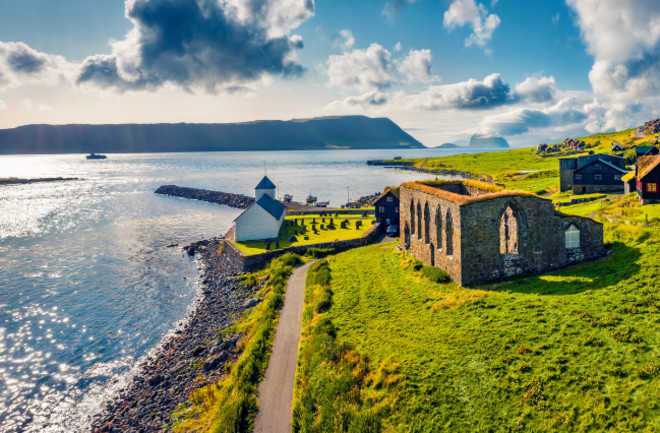For centuries, life on Hestur, a small Faroese island located halfway between Scotland and Iceland in the northeast Atlantic, was isolated: Streymoy, the biggest of the 18 islands that comprise the Faroe Islands, is almost ironically close, within eyeshot, but powerful currents in the fjord dividing the two islands long made travel between them difficult.
Today, a modern ferry connects Hestur and Streymoy, but across most of its history, Hestur’s inhabitants were left to care for themselves. They survived on sheep, birds, and, most importantly, fish — though fishing came with its own dangers. In 1919, 11 men — about a third of the island’s men who were fit to work — died when two boats disappeared in the fjord during a storm. For many of the survivors, the accident instilled a deep respect for the sea; even today, with only 15 residents remaining on the island, that sentiment lives on.
Now, however, the fjord’s powerful currents may become the center of a new legacy: The Swedish company Minesto wants to harness them and build the world’s first tidal energy park. The array of sea turbines, which would float between Hestur and Streymoy, is expected to produce around 20 percent of all Faroese energy by 2030, the company claims. And when combined with other ongoing projects, Minesto hopes that tidal energy will eventually produce around 40 percent of the growing energy consumption of the archipelago’s 54,000 residents.
“The Faroe Islands will be the showcase for the world,” says CEO Martin Edlund, adding that he believes tidal energy could be a huge factor in reducing carbon dioxide emissions globally.
But the project is still undergoing an environmental impact survey — and some researchers and residents are concerned that harnessing the island nation’s tidal power may come at a cost.

